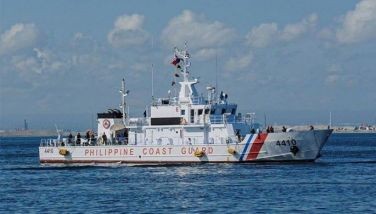PAL’s new Airbus arrives
MANILA, Philippines - Another brand new Airbus A330-300 will be added to the growing fleet of Philippine Airlines (PAL) with the arrival yesterday from Toulouse, France of one of the 20 long-range and wide-body aircraft that it ordered last year.
The new aircraft will serve the airline’s new route to Abu Dhabi starting Oct. 1, as the carrier makes its return to the Middle East.
On Nov. 1, PAL will also fly to Dubai, the capital and largest city of the United Arab Emirates (UAE) with a population of 921,000.
PAL abandoned its Middle Eastern routes several years ago because it was unable to compete with Gulf carriers that receive subsidies on fuel expenses.
“This is a milestone for Philippine Airlines. We are now starting the next phase of our fleet renewal, anchored on new-generation A330-300 aircraft,†PAL president Ramon Ang said in a statement yesterday.
“The A330-300 will be servicing our guests and our very own overseas Filipino workers (OFWs) to fly back to their country using the flag carrier,†he said.
The Airbus A330-300 aircraft features seating for 414 passengers configured in two classes: premium economy and standard economy.
Standard economy will have 375 seats while premium economy will offer 39 seats.
The aircraft will be powered by Rolls-Royce Trent 772B-60 engines.
Last year, PAL placed an order for 45 A321 aircraft and 20 A330 aircraft to be delivered between 2013 and 2019.
So far, PAL has taken delivery of two A321 aircraft and one A330 aircraft.
PAL said it expects to receive an additional five A330-300 aircraft before the year ends.
Fleet build-up program
PAL is seen to capitalize on the increasing air passenger traffic in the Asia-Pacific region with its ambitious fleet build-up program, according to European plane maker Airbus.
According to Airbus’ latest Global Market Forecast, Asia-Pacific will surpass Europe and North America in air passenger traffic, with annual volume expected to soar by 200 percent in the next 20 years, fueled by economic growth, increasing accessibility of air transport services, ease of travel and migration.
The region’s traffic, as measured by revenue passenger kilometers (RPK) or the number of paying passengers carried multiplied by the distance flown, is forecast to triple to 4.8 trillion in 2032 from 1.6 trillion last year.
As a result, the Asia-Pacific is expected to further expand its lead in air traffic to a 34 percent share in 2032 from 29 percent last year.
Simon Azar, Airbus manager for twin-aisle models, said he sees the Philippines as a huge growth market in the coming years, given its growing economy.
The Asia-Pacific is also seen to lead global demand for larger and more eco-efficient aircraft types in the next two decades, with around 9,220 new passenger and freight aircraft valued at nearly $4.4 trillion needed to meet global demand.
The Asia-Pacific region is a core market for Airbus, accounting for 31 percent of all orders recorded by the company to date.
Today, there are more than 2,100 Airbus aircraft in service with 97 operators across the region, with another 1,800 on order with customers for future delivery.
This represents over a third of the company’s total backlog, reflecting the importance of the region as the fastest growing market for new civil aircraft.
PAL is in the midst of an aggressive refleeting program aimed at restoring financial health and reclaiming dominance of its local market.
It placed a firm order with Airbus for 64 aircraft worth around $10 billion, consisting of 44 single aisle A321s and 20 wide-body A330-300s, the largest aircraft purchase in Philippine history.
The flag carrier on Friday took delivery of the first of its new fleet of Rolls-Royce Trent engined A330s.
The airline will receive its second A330 next month and another four will come online before the end of the year.
PAL will take delivery of 17 aircraft next year, to be followed by 15 in 2015, 10 in 2016, two in 2017, and four each in 2018 and 2019.
Ismael Augusto Dizon, PAL senior vice-president for operations, said the newly acquired A330 would further broaden the company’s global footprint and provide additional flexibility to its worldwide network.
The A330 is an aircraft of choice for a full range of users, due to its excellent operating economics, proven reliability and flexibility.
At the rate of 10 per month, A330 production is the highest ever for an Airbus wide-body jetliner.
The Rolls-Royce Trent engine, which is the market leader on the Airbus A330 and has won 70 percent of new orders over the last four years, includes novel technologies designed to shave off weight and minimize fuel consumption.
Rolls-Royce is a leading provider of power systems and services for use on land, at sea and in the air, and has established a strong position in global markets – civil aerospace, defense aerospace, marine and energy.
- Latest
- Trending





























